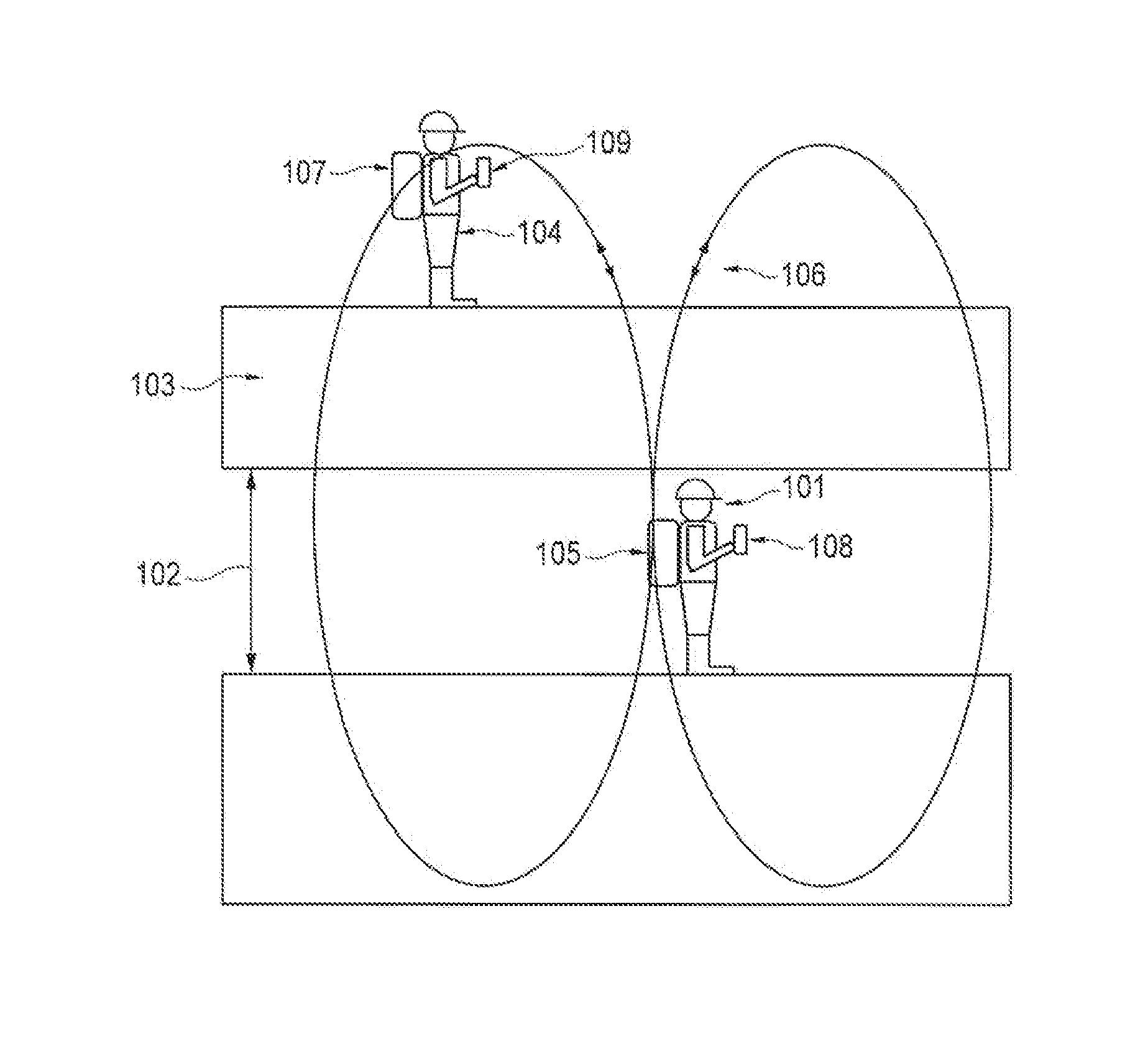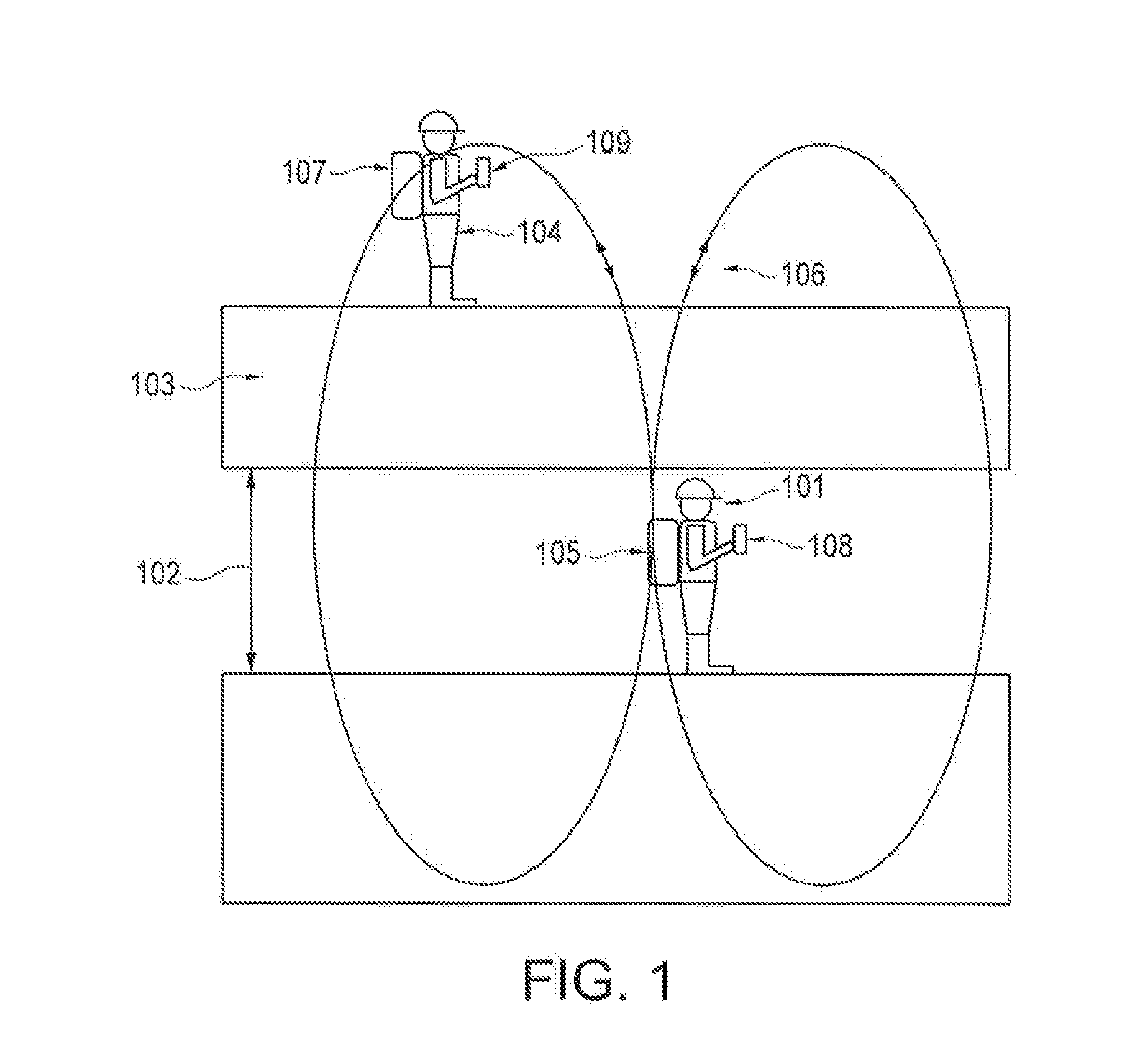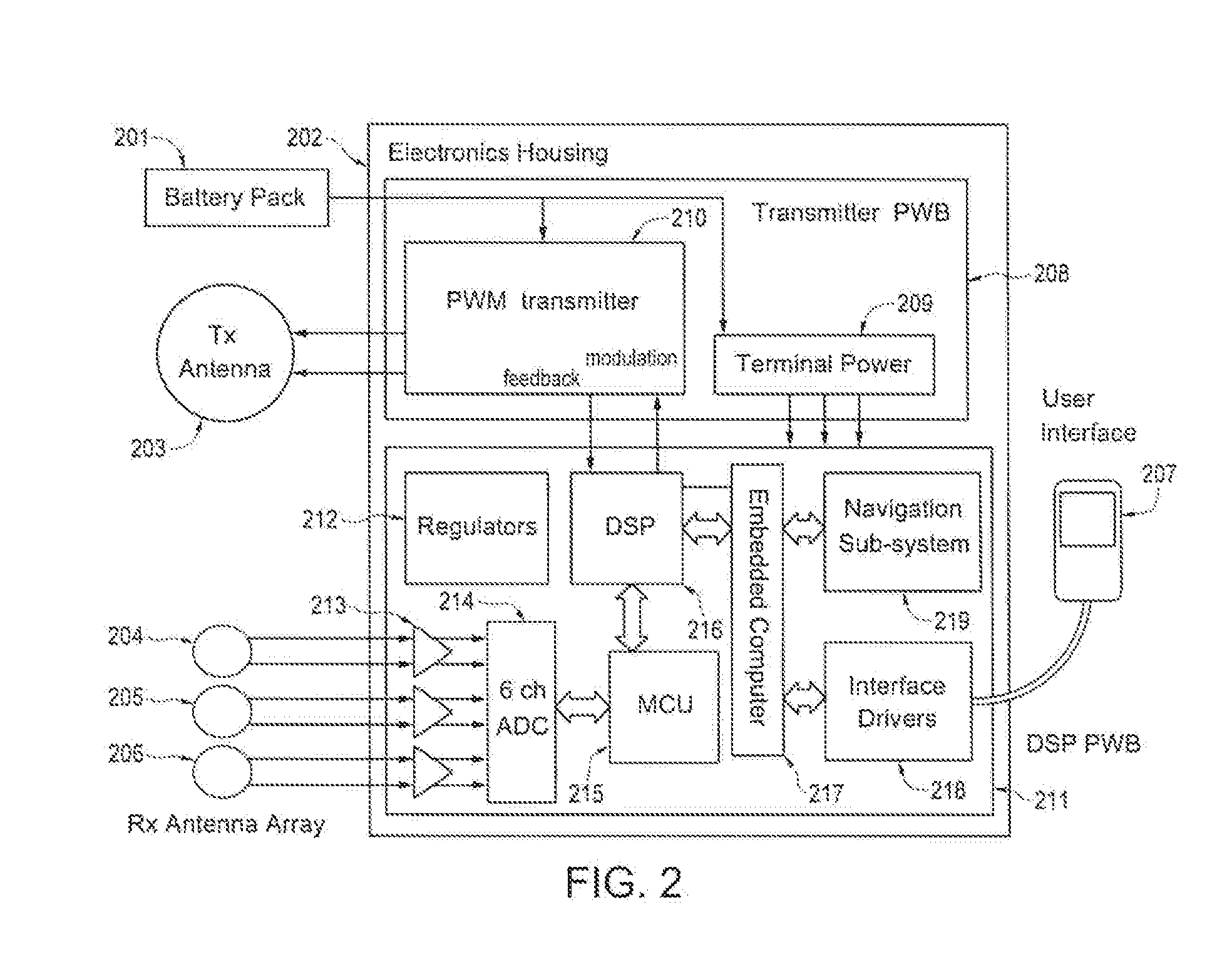Portable through-the-earth radio
a radio and earth-moving technology, applied in the field of radio, can solve the problems of not being able to communicate easily, the current wireless communication technology cannot traverse a thick solid barrier made of materials such as rock, concrete or soil, and the workers are therefore not able to easily communicate, so as to achieve the effect of increasing the magnetic field
- Summary
- Abstract
- Description
- Claims
- Application Information
AI Technical Summary
Benefits of technology
Problems solved by technology
Method used
Image
Examples
Embodiment Construction
[0043]The present invention provides an apparatus for portable through-the-earth radio (PTTER) comprising a surface radio and a portable radio. It should be understood that the present invention refers to “through-the-earth” communications but that this refers to other physical barriers to wireless communications such as thick walls, for example, and is also operable without any physical barrier.
[0044]The surface radio of the present invention may be deployed on the surface of the earth (directly on the earth or mounted to a vehicle, for example) or at a location underground and may be fixed, transportable or portable. The portable radio may be deployed underground, remote from the surface radio. It should also be understood that the portable radio of the present invention could also be adapted for fixed or transportable implementation. The PTTER differs from prior art applications in that the portable radio is operable to communicate wirelessly and directly with the surface radio w...
PUM
 Login to view more
Login to view more Abstract
Description
Claims
Application Information
 Login to view more
Login to view more - R&D Engineer
- R&D Manager
- IP Professional
- Industry Leading Data Capabilities
- Powerful AI technology
- Patent DNA Extraction
Browse by: Latest US Patents, China's latest patents, Technical Efficacy Thesaurus, Application Domain, Technology Topic.
© 2024 PatSnap. All rights reserved.Legal|Privacy policy|Modern Slavery Act Transparency Statement|Sitemap



